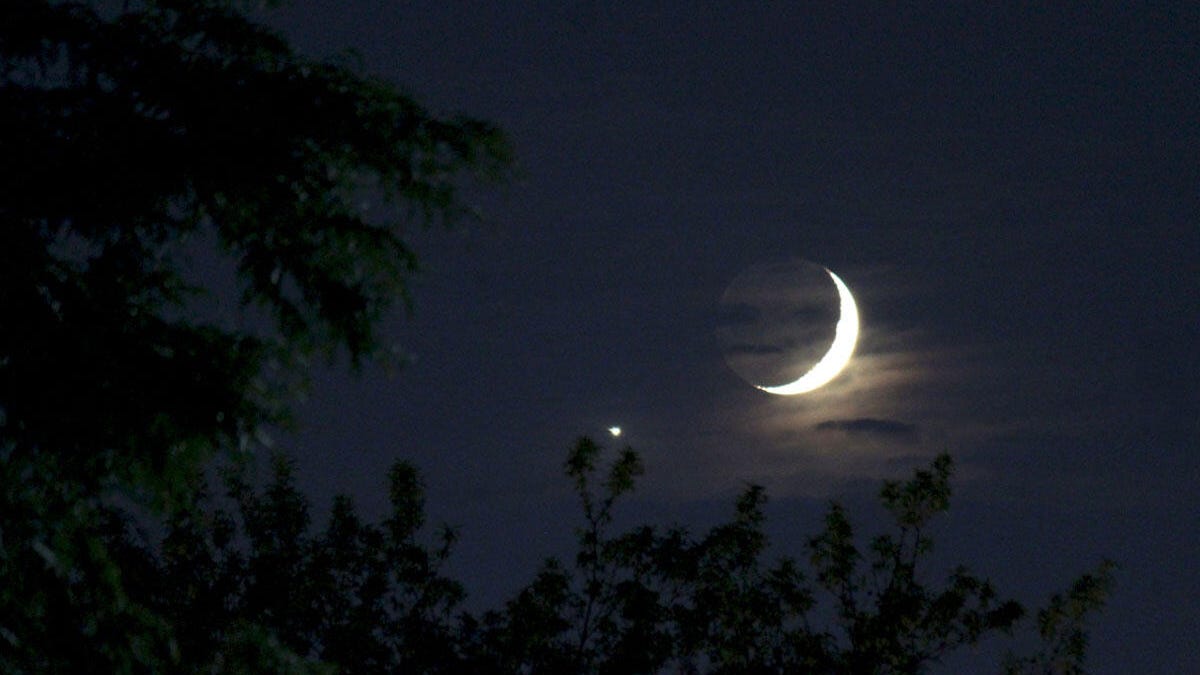Venus and the moon will do a celestial tango this week
They're the brightest bodies in the night sky and they're getting very close, but only for voyeuristic earthlings.

The crescent moon and Venus seen in 2018
Get ready for a celestial shindig in the evening sky this week as the crescent moon and Venus pass each other in the night.
Starting Wednesday night, the waxing moon -- looking a bit like a Cheshire cat's grin or the most heavenly of hammocks -- will begin to make its move. Sky and Telescope advises heading outside about 45 minutes after sunset and looking about halfway up in the western sky. There, roughly below the constellation Aries, you should see the lazy crescent moon below and a little bit to the side of brilliant Venus.
The pair make up the second and third brightest bodies in the sky this week, behind the sun, of course. But once that hothead is out of the picture, the couple moves closer again Thursday evening, when the crescent moon will slide past Venus. Again, about 45 minutes after sunset and looking roughly to the southwest, you'll be able to see the pair in the most intense moment of their astral tango, lining up close enough to be almost cheek to cheek in the sky.
Of course, in reality, the couple will actually be millions of miles apart. But the vastness of space and the serendipitous trickery of perspective will still make for a cool view Thursday night.
If you do miss this dance, don't despair, as it'll come again in late March. Venus, though, is near a sweet spot right now in terms of balancing brightness with height above the western horizon. After May it quickly begins to disappear below the horizon, requiring its fans to get up pretty early in the morning to get a glimpse of its glory.
Bottom line: Just step outside and take a quick peek Thursday evening.

